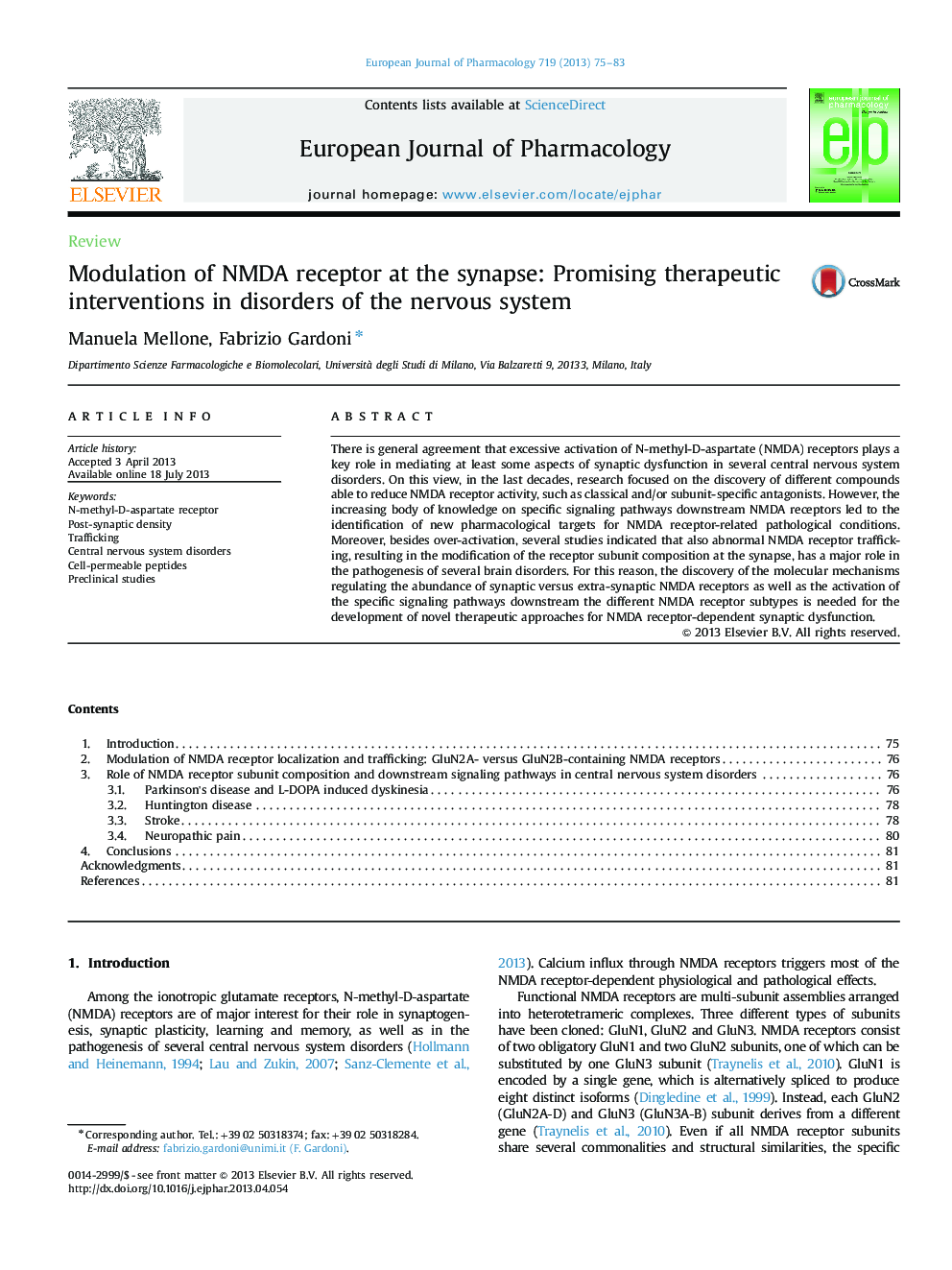| Article ID | Journal | Published Year | Pages | File Type |
|---|---|---|---|---|
| 5828295 | European Journal of Pharmacology | 2013 | 9 Pages |
There is general agreement that excessive activation of N-methyl-D-aspartate (NMDA) receptors plays a key role in mediating at least some aspects of synaptic dysfunction in several central nervous system disorders. On this view, in the last decades, research focused on the discovery of different compounds able to reduce NMDA receptor activity, such as classical and/or subunit-specific antagonists. However, the increasing body of knowledge on specific signaling pathways downstream NMDA receptors led to the identification of new pharmacological targets for NMDA receptor-related pathological conditions. Moreover, besides over-activation, several studies indicated that also abnormal NMDA receptor trafficking, resulting in the modification of the receptor subunit composition at the synapse, has a major role in the pathogenesis of several brain disorders. For this reason, the discovery of the molecular mechanisms regulating the abundance of synaptic versus extra-synaptic NMDA receptors as well as the activation of the specific signaling pathways downstream the different NMDA receptor subtypes is needed for the development of novel therapeutic approaches for NMDA receptor-dependent synaptic dysfunction.
